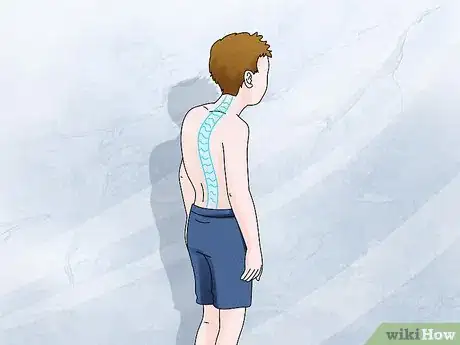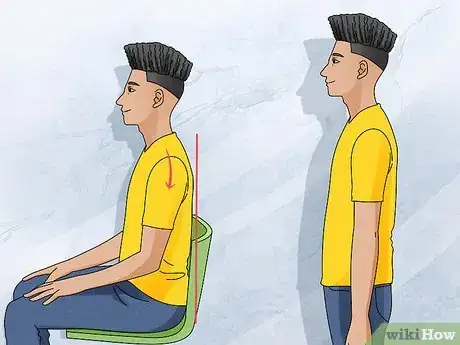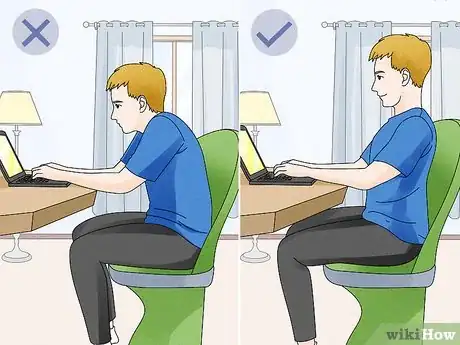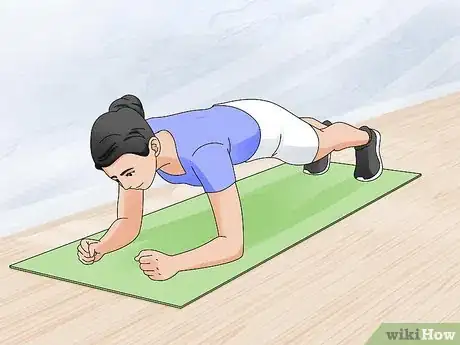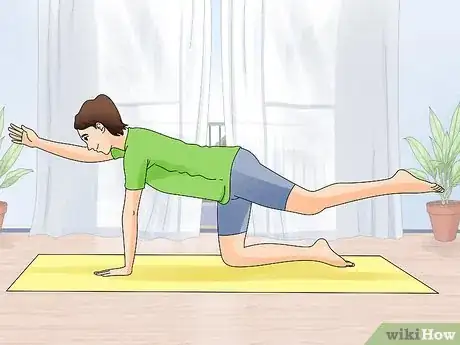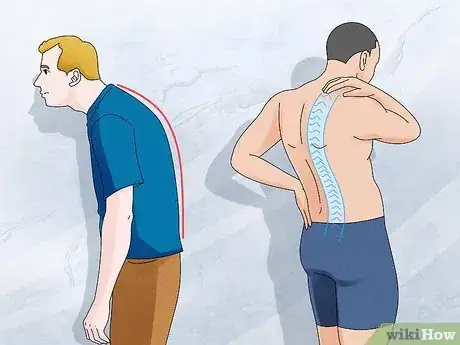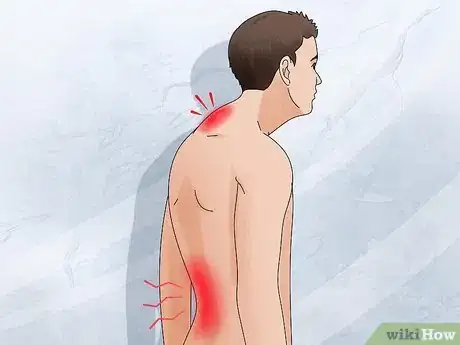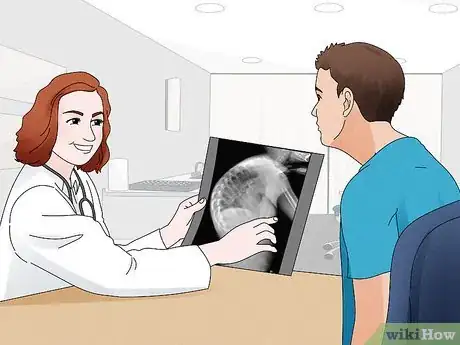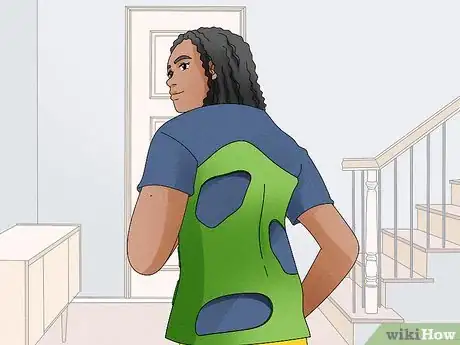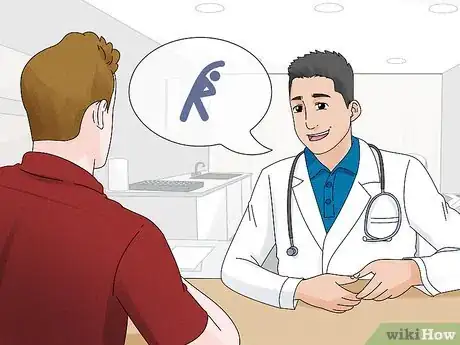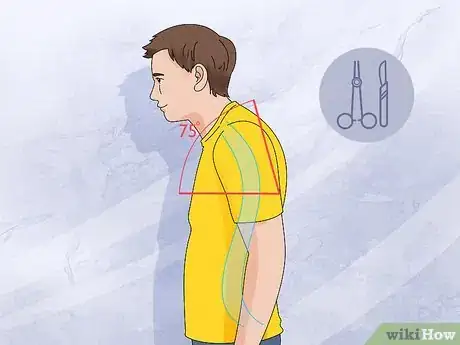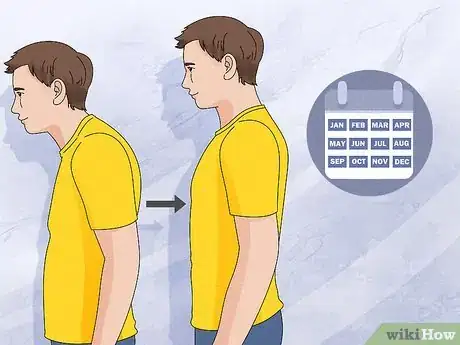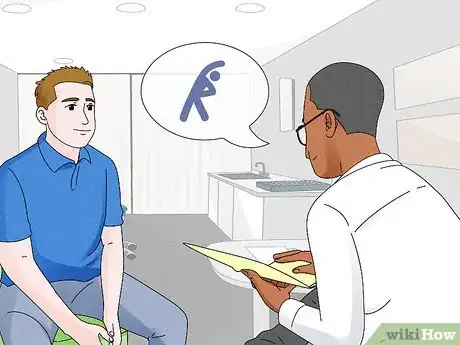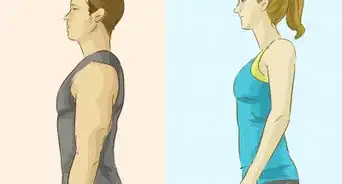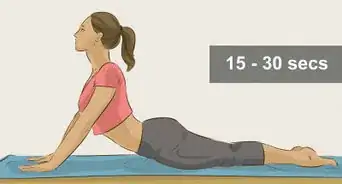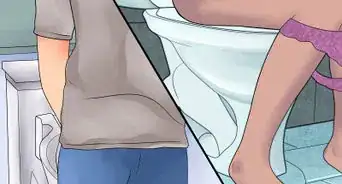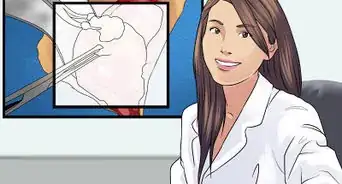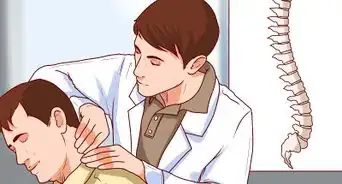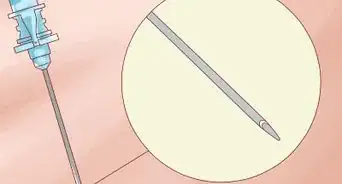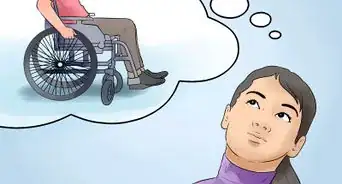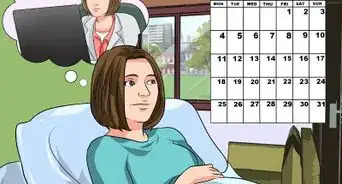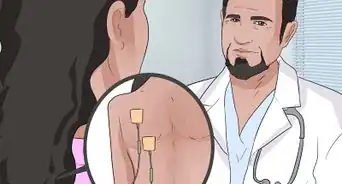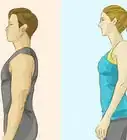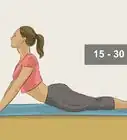This article was co-authored by Karen Litzy, PT, DPT and by wikiHow staff writer, Jennifer Mueller, JD. Dr. Karen Litzy, PT, DPT is a licensed physical therapist, international speaker, owner of Karen Litzy Physical Therapy, PLLC, and the host of the Healthy Wealthy & Smart podcast. With over 20 years of experience, she specializes in a comprehensive approach to practicing physical therapy utilizing therapeutic exercises, manual therapy, pain education, and home exercise programs. Karen holds a Master of Science in Physical Therapy and a Doctor of Physical Therapy from Misericordia University. Karen is a member of the American Physical Therapy Association (APTA) and is an official spokesperson for the APTA as a member of their media corps. She lives and works in New York City.
There are 10 references cited in this article, which can be found at the bottom of the page.
This article has been viewed 8,304 times.
Kyphosis is a spinal condition that causes your spine to curve outward. This curve is commonly referred to as a "hunchback." While mild kyphosis doesn't usually cause any serious health complications, it can make you feel pretty self-conscious. The good news is that the most common types of kyphosis can be avoided entirely. Here, we've collected answers to some of your most pressing questions about kyphosis.[1]
Steps
Expert Q&A
-
QuestionHow can I have better posture?
 Karen Litzy, PT, DPTDr. Karen Litzy, PT, DPT is a licensed physical therapist, international speaker, owner of Karen Litzy Physical Therapy, PLLC, and the host of the Healthy Wealthy & Smart podcast. With over 20 years of experience, she specializes in a comprehensive approach to practicing physical therapy utilizing therapeutic exercises, manual therapy, pain education, and home exercise programs. Karen holds a Master of Science in Physical Therapy and a Doctor of Physical Therapy from Misericordia University. Karen is a member of the American Physical Therapy Association (APTA) and is an official spokesperson for the APTA as a member of their media corps. She lives and works in New York City.
Karen Litzy, PT, DPTDr. Karen Litzy, PT, DPT is a licensed physical therapist, international speaker, owner of Karen Litzy Physical Therapy, PLLC, and the host of the Healthy Wealthy & Smart podcast. With over 20 years of experience, she specializes in a comprehensive approach to practicing physical therapy utilizing therapeutic exercises, manual therapy, pain education, and home exercise programs. Karen holds a Master of Science in Physical Therapy and a Doctor of Physical Therapy from Misericordia University. Karen is a member of the American Physical Therapy Association (APTA) and is an official spokesperson for the APTA as a member of their media corps. She lives and works in New York City.
Physical Therapist One of the best things you can do is to give yourself permission to vary your posture throughout the day. If you're sitting at a desk all day, you might stand up for a little bit, sit down, slouch back, lean to one side—keep moving around every half an hour to 45 minutes.
One of the best things you can do is to give yourself permission to vary your posture throughout the day. If you're sitting at a desk all day, you might stand up for a little bit, sit down, slouch back, lean to one side—keep moving around every half an hour to 45 minutes. -
QuestionWhat kind of exercises will improve my posture?
 Karen Litzy, PT, DPTDr. Karen Litzy, PT, DPT is a licensed physical therapist, international speaker, owner of Karen Litzy Physical Therapy, PLLC, and the host of the Healthy Wealthy & Smart podcast. With over 20 years of experience, she specializes in a comprehensive approach to practicing physical therapy utilizing therapeutic exercises, manual therapy, pain education, and home exercise programs. Karen holds a Master of Science in Physical Therapy and a Doctor of Physical Therapy from Misericordia University. Karen is a member of the American Physical Therapy Association (APTA) and is an official spokesperson for the APTA as a member of their media corps. She lives and works in New York City.
Karen Litzy, PT, DPTDr. Karen Litzy, PT, DPT is a licensed physical therapist, international speaker, owner of Karen Litzy Physical Therapy, PLLC, and the host of the Healthy Wealthy & Smart podcast. With over 20 years of experience, she specializes in a comprehensive approach to practicing physical therapy utilizing therapeutic exercises, manual therapy, pain education, and home exercise programs. Karen holds a Master of Science in Physical Therapy and a Doctor of Physical Therapy from Misericordia University. Karen is a member of the American Physical Therapy Association (APTA) and is an official spokesperson for the APTA as a member of their media corps. She lives and works in New York City.
Physical Therapist Focus on back and shoulder exercises, like rows. One way to do that if you can't get to a gym is to wrap exercise bands around your door, then use them to pull your arms back, squeezing your shoulder blades together. Also, do exercises for your upper back, trunk, and abdominal muscles. This will help support your ribcage, which will give you a stronger base to work from.
Focus on back and shoulder exercises, like rows. One way to do that if you can't get to a gym is to wrap exercise bands around your door, then use them to pull your arms back, squeezing your shoulder blades together. Also, do exercises for your upper back, trunk, and abdominal muscles. This will help support your ribcage, which will give you a stronger base to work from.
Warnings
- Severe kyphosis can have serious health complications, including persistent pain and difficulty breathing. If you suspect you have kyphosis, it's important to seek treatment as soon as possible to keep it from getting worse.[18]⧼thumbs_response⧽
References
- ↑ https://my.clevelandclinic.org/health/diseases/17671-kyphosis
- ↑ https://www.nhs.uk/conditions/kyphosis/causes/
- ↑ https://health.clevelandclinic.org/how-you-can-fix-a-dowagers-hump-prevention-tips/
- ↑ https://my.clevelandclinic.org/health/diseases/17671-kyphosis#prevention
- ↑ https://medlineplus.gov/guidetogoodposture.html
- ↑ https://www.mayoclinic.org/healthy-lifestyle/fitness/multimedia/core-strength/sls-20076575
- ↑ https://www.nhs.uk/conditions/kyphosis/treatment/
- ↑ https://www.nhs.uk/conditions/kyphosis/
- ↑ https://my.clevelandclinic.org/health/diseases/17671-kyphosis
- ↑ https://orthoinfo.aaos.org/en/diseases--conditions/kyphosis-roundback-of-the-spine
- ↑ https://www.nhs.uk/conditions/kyphosis/diagnosis/
- ↑ https://www.nhs.uk/conditions/kyphosis/treatment/
- ↑ https://health.clevelandclinic.org/how-you-can-fix-a-dowagers-hump-prevention-tips/
- ↑ https://my.clevelandclinic.org/health/diseases/17671-kyphosis
- ↑ https://health.clevelandclinic.org/how-you-can-fix-a-dowagers-hump-prevention-tips/
- ↑ https://my.clevelandclinic.org/health/diseases/17671-kyphosis
- ↑ https://my.clevelandclinic.org/health/diseases/17671-kyphosis
- ↑ https://www.nhs.uk/conditions/kyphosis/
